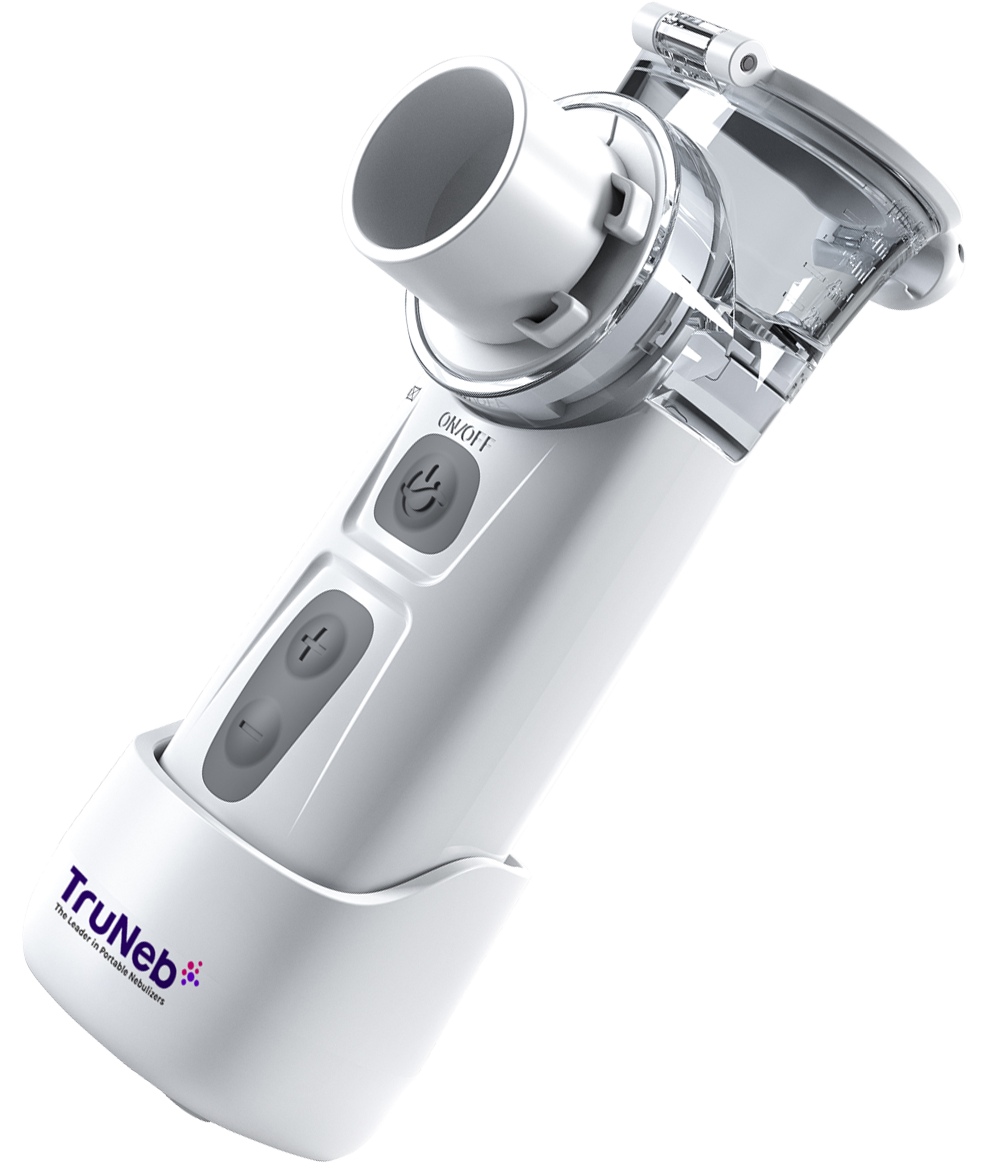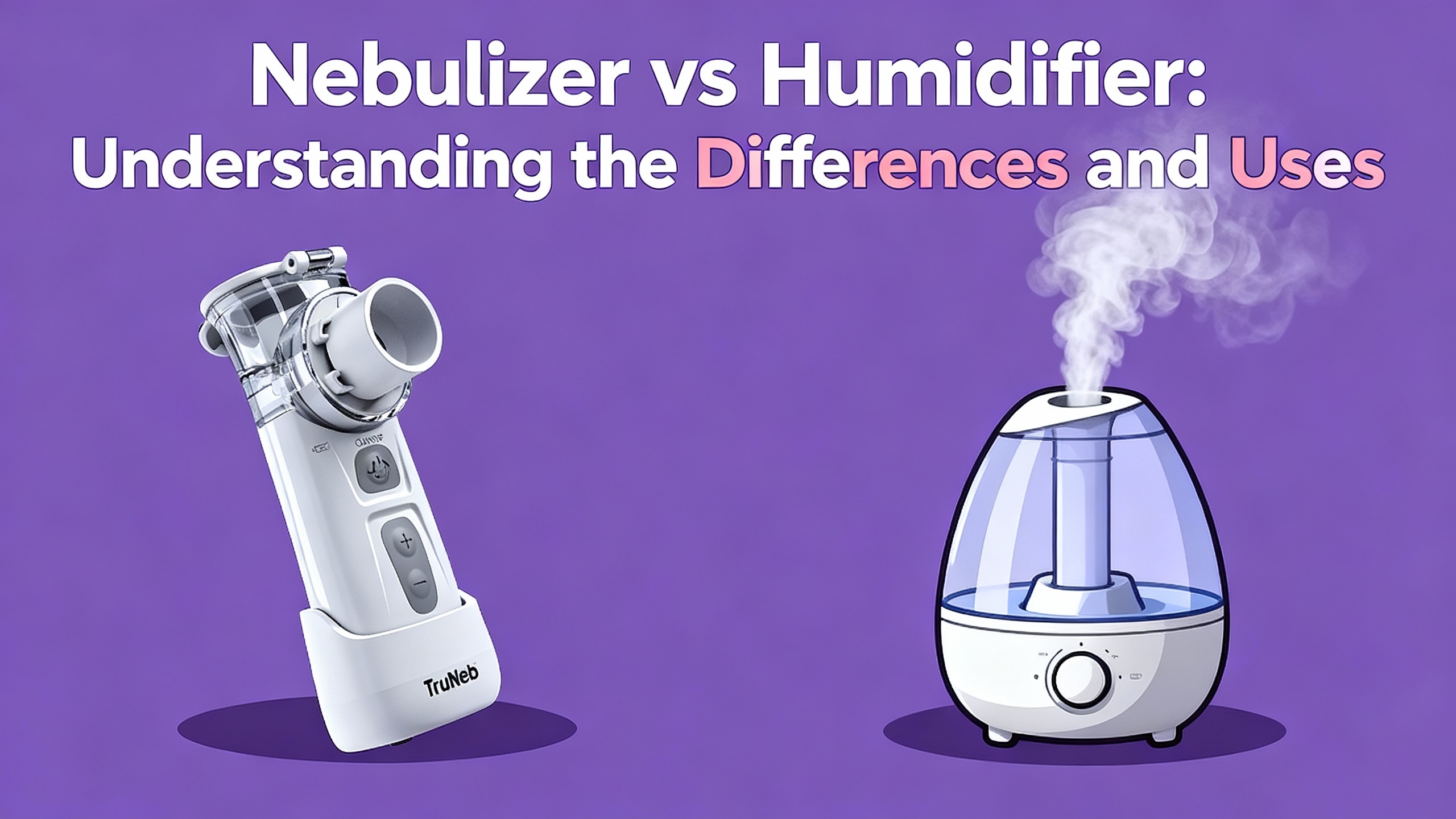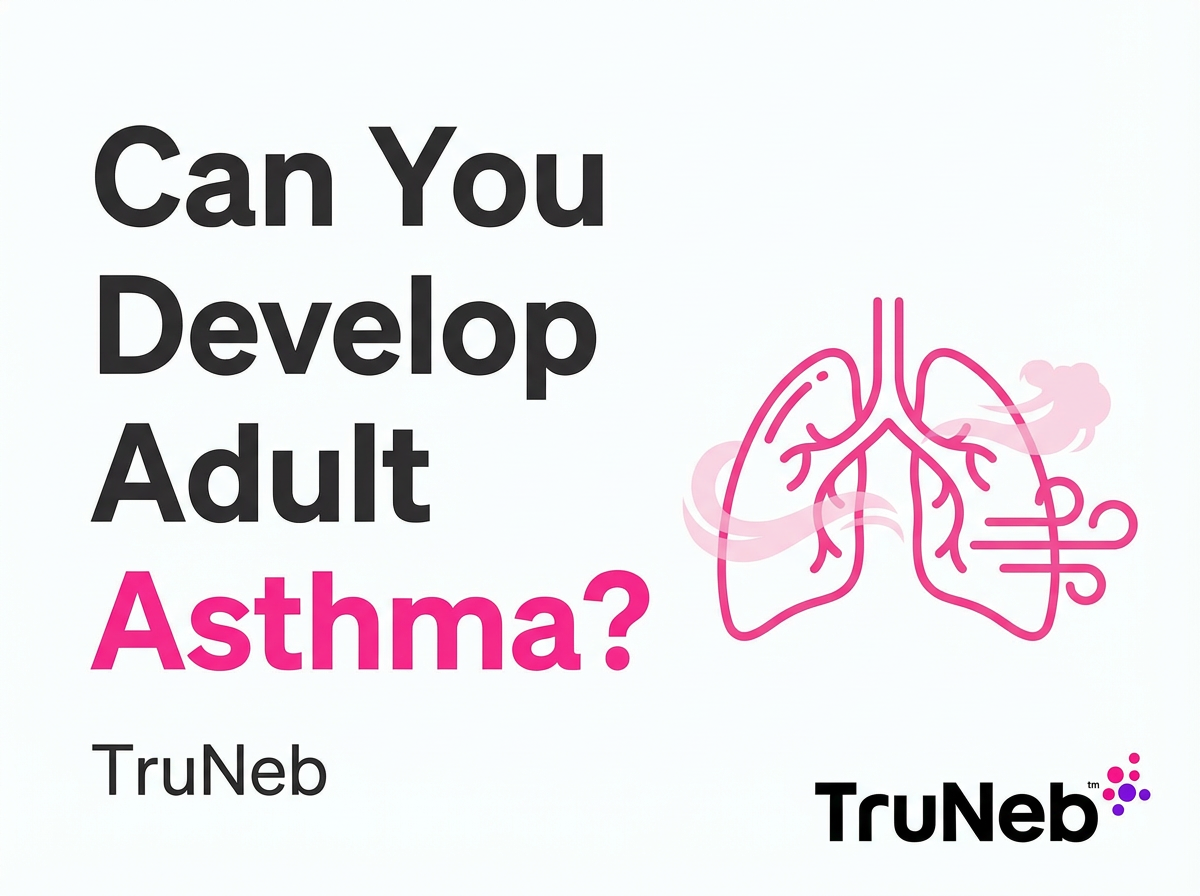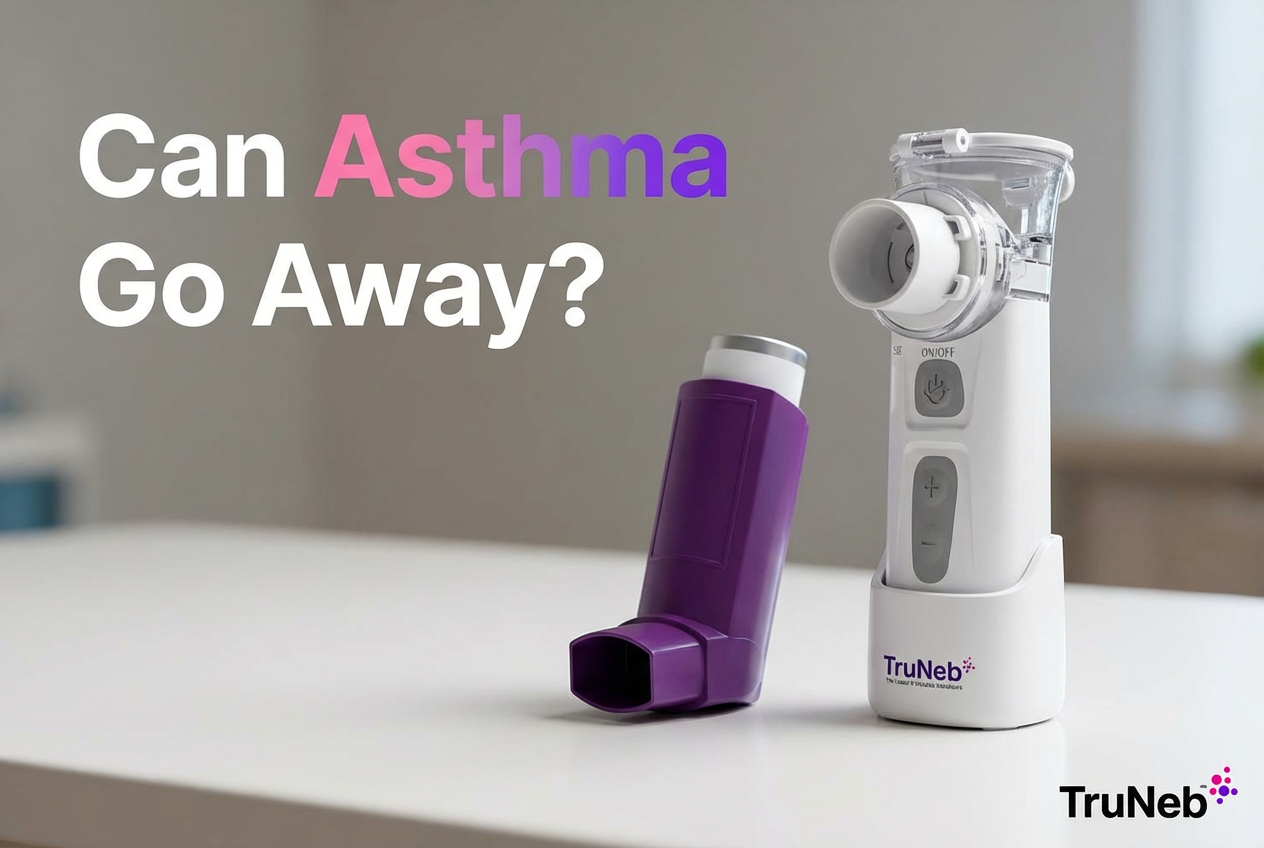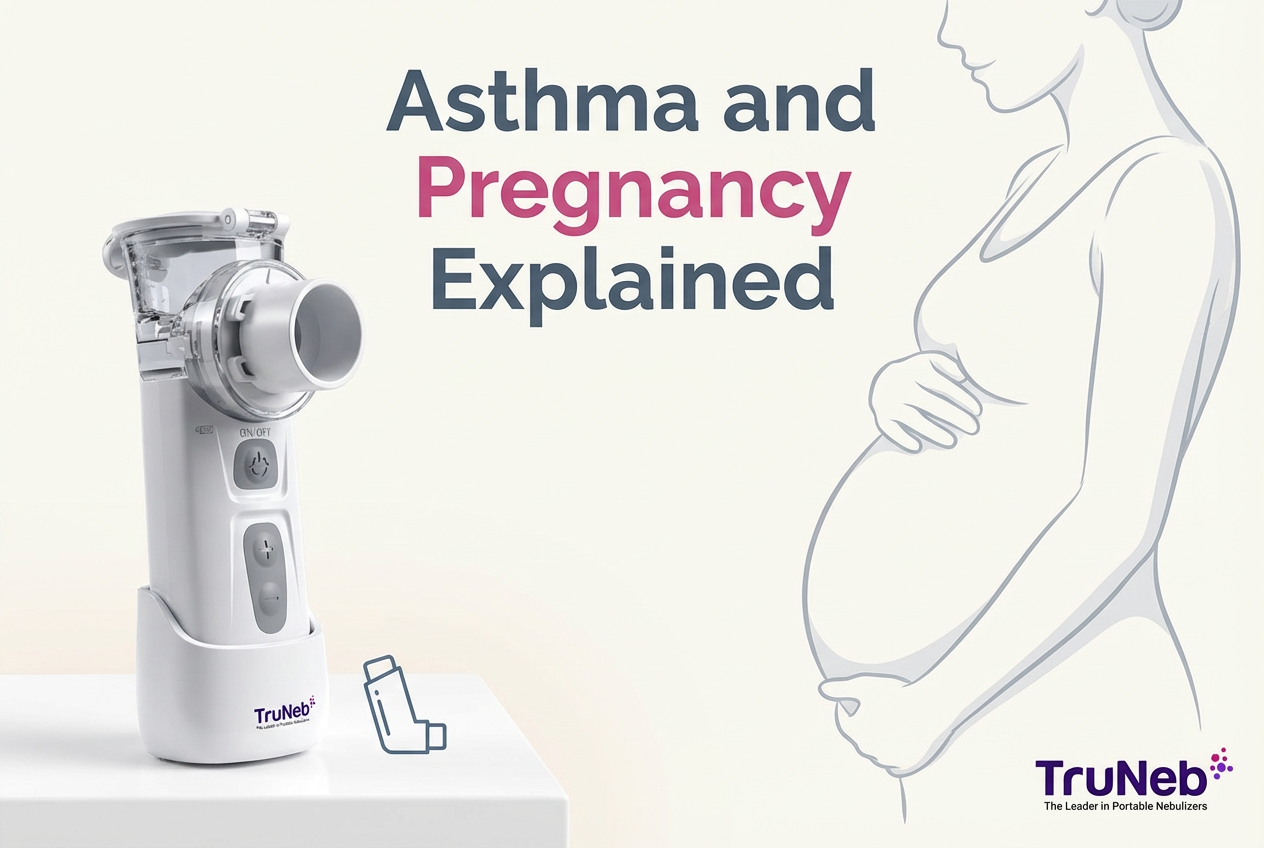On this page
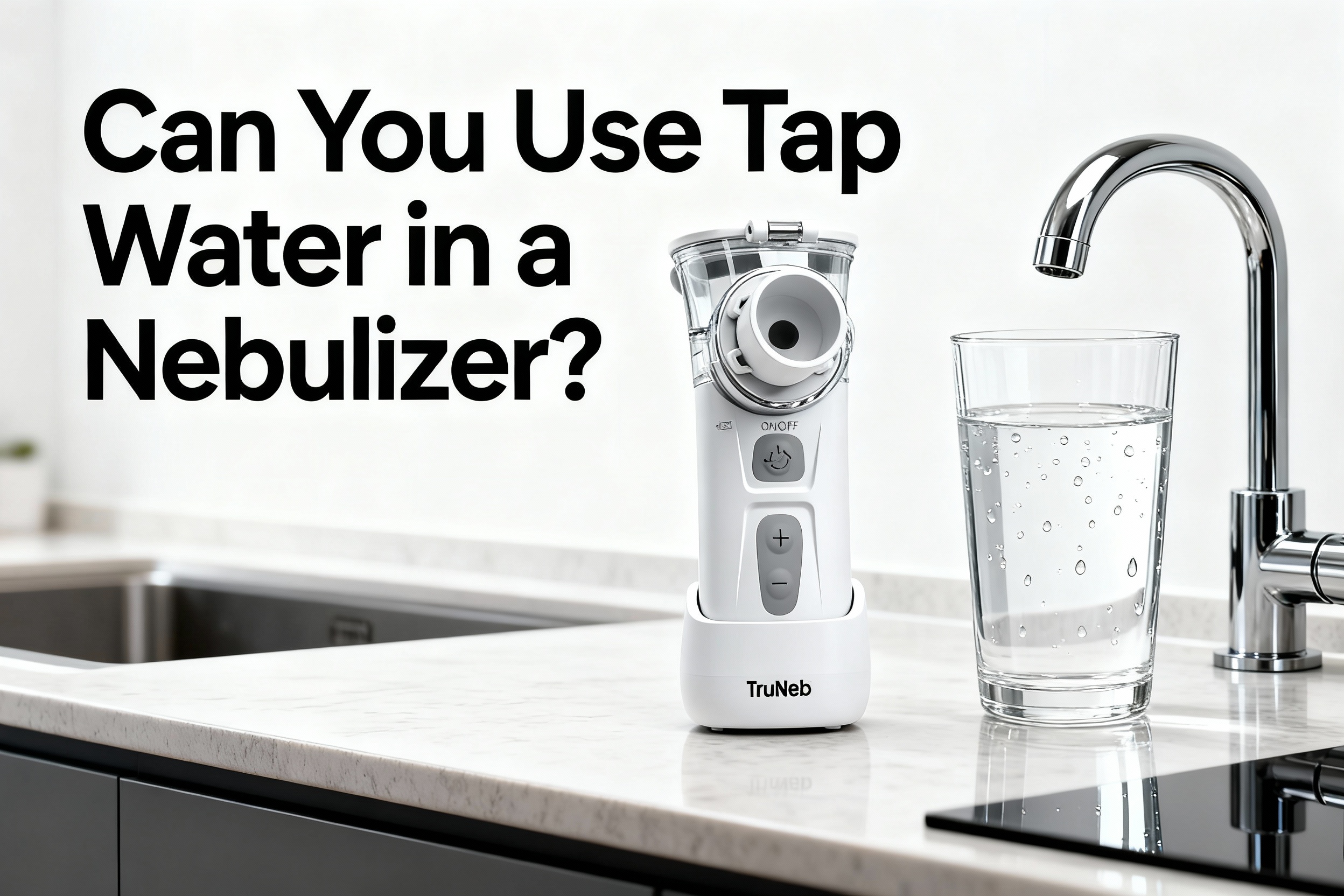
No. Tap water shouldn’t go in a nebulizer. It isn’t sterile, and tiny germs in tap water can be carried deep into your lungs when turned into mist. That can lead to serious infections. Use sterile normal saline or sterile water made for inhalation instead.
Tap water is not sterile for nebulizer use.
Quick rule of thumb: only put solutions your doctor or the device instructions say are safe for nebulizing.
If you already used tap water by mistake, clean and disinfect your nebulizer right away and watch for fever, cough, or breathing changes.
⚠️ If you have severe symptoms like trouble breathing, chest pain, bluish lips/face, confusion, or a high fever, seek emergency care immediately.
Why Tap Water Is Dangerous in a Nebulizer
Tap water is not sterile. It can carry bacteria (including Legionella), nontuberculous mycobacteria (NTM), fungi, or amoebae. Your stomach acid can handle small amounts when you drink it, but your lungs cannot. A nebulizer turns liquid into a fine mist, so any germs in the water can go straight into your airways.
What this can cause:
- Lung infections like pneumonia, especially in people with asthma, COPD, or weak immune systems.
- Irritation or coughing because plain water doesn’t match your body’s salt level.
- Mineral buildup inside the cup and mesh, which may clog parts and reduce medication delivery over time.
Tap water isn’t sterile, and nebulizing it can carry germs deep into your lungs, raising the risk of serious infections.
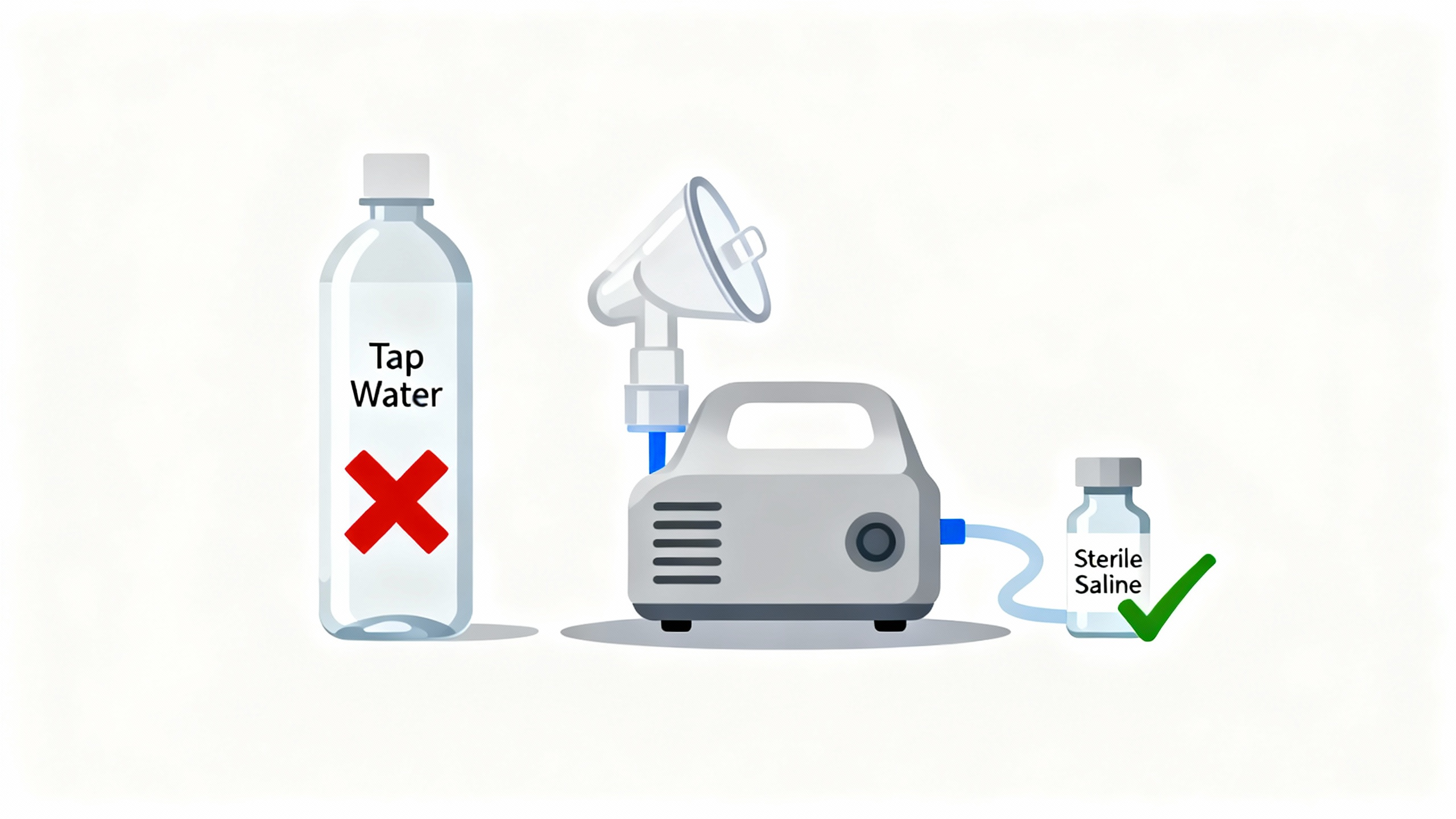
Real Consequences: What If You Nebulize Tap Water?
- Right away, you might feel only mild coughing or throat irritation.
- Over the next days, if germs were present, you could develop fever, chest tightness, more coughing, or shortness of breath.
- If this happens, contact your doctor and mention the tap water exposure.
If you used tap water once by accident:
- Disassemble and clean your nebulizer now.
- Disinfect the parts as your manual recommends.
- Use only sterile saline going forward.
If symptoms don’t improve or you’re unsure about what to use, talk to your doctor.
| Liquid | Sterile | Minerals | Gentle on lungs | Use in nebulizer |
|---|---|---|---|---|
| Tap water | No | Yes | No | Not safe |
| Boiled tap water (cooled) | Reduced microbes; not guaranteed sterile | Yes | No | Last-resort one-time only[1] |
| Bottled or filtered water | Usually no | Varies | No | Not recommended[2] |
| Distilled water (sterile, labeled for inhalation) | Yes | No | Not isotonic | Only if prescribed/instructions[3] |
| Normal saline 0.9% (sterile) | Yes | Balanced salts | Yes | Recommended standard |
Notes: [1] For true emergencies: bring to a rolling boil for at least 5 minutes, cool, use immediately, do not store; switch back to sterile saline as soon as possible. [2] Not sterile unless labeled sterile/distilled for inhalation. [3] Plain sterile water may be used only when explicitly directed by your prescription or device manual; routine nebulization of plain water is not recommended.
Why Saline and Sterile Water Are Recommended
- Normal saline 0.9% is sterile and isotonic, which means its salt level matches your body’s fluids. That helps calm and hydrate airways without causing swelling or sting.
- Sterile distilled water has no minerals and is used only if your doctor or the medication instructions specify it. It is not the same as saline and can feel irritating if nebulized plain.
- Home-filtered or bottled water isn’t sterile. Even if it tastes clean, it can still carry germs.
Not all bottled “distilled water” remains sterile after opening; sterile water for inhalation is sealed and labeled for that purpose.
Key point: use sterile saline for routine nebulizer treatments unless your prescription clearly says otherwise.
Safety Note
- Use only sterile saline or prescribed solutions in your nebulizer.
- Don’t mix or dilute medications unless your doctor says to.
- Don’t use essential oils or herbal mixtures in a nebulizer.
- Talk to your doctor before trying a new medication or switching solutions.
If You Don’t Have Saline: What’s Actually Safe
- Best option: pause and get sterile saline vials from a pharmacy. They’re sold in single-use ampoules.
- Emergency only: public health guidance notes that bringing water to a rolling boil for at least 5 minutes reduces germs; if your doctor has told you to nebulize and there’s no sterile option, use the cooled water once as a last resort, then switch back to sterile saline as soon as possible. Discard any leftover water.
- Skip these: bottled water, filtered water, mineral water, or essential oils. They aren’t sterile and can harm your lungs or the device.
- Skip DIY or “homemade” saline unless your doctor gave you a sterile method and exact instructions—home mixtures aren’t reliably sterile.
This is a stop-gap plan, not a routine. Ask your doctor what to keep on hand so you don’t run out again.
Only use a properly boiled-and-cooled option as a last resort, then return to sterile saline as soon as you can.
How to Use and Maintain Your Nebulizer Safely
- Wash your hands before every treatment.
- Use only sterile saline or prescribed medication vials.
- After each use: disassemble parts, wash with warm soapy water, rinse with sterile or distilled water, and air-dry on a clean towel.
- Disinfect regularly: follow your manual. Most manuals allow soaking parts in 1 part white vinegar to 3 parts sterile water for 30 minutes, then rinse with sterile water and air-dry.
- Keep tubing dry (do not submerge unless your manual says it’s safe). Store parts dry in a clean container.
- Replace cups, masks, and filters as the manufacturer recommends.
- You’ll see “steam inhalers” near nebulizers—these are not for breathing medications.
Clean, rinse with sterile or distilled water, disinfect routinely, and keep parts dry to prevent contamination.
Never rinse parts with tap water after cleaning. That can reintroduce germs.
If parts look discolored, smell musty, or if symptoms worsen, talk to your doctor.
A Quick Tool That Helps
A portable mesh nebulizer like TruNeb™ can help keep treatments simple at home or on the go. It’s small, quiet, and works with single-use sterile saline or prescribed medication vials. That makes it easier to avoid risky workarounds like tap water. Check your device manual for exact instructions and approved solutions.
A small, portable mesh nebulizer that works with sterile vials helps you avoid unsafe substitutes like tap water.
Frequently Asked Questions
Tap or click a question below to see the answer:
No. If there is absolutely no other option, boiled-and-cooled water is safer than straight tap water, but use it only once in a true emergency and switch to sterile saline as soon as possible.
Not exactly. Boiling kills many germs but doesn’t remove minerals, and the water can be recontaminated as it cools. Sterile water for inhalation is produced and sealed under sterile conditions.
No. Bottled and filtered water are not guaranteed sterile. Unless it is labeled sterile or distilled for inhalation, do not nebulize it.
Normal saline matches your body’s salt level, so it’s gentle on airways and comes sterile in sealed vials. Plain water can irritate lungs and carries a higher contamination risk.
Clean and disinfect your nebulizer right away. Watch for fever, cough, chest tightness, or shortness of breath over the next few days, and contact your doctor if symptoms appear.
Key Takeaways
- Don’t use tap water in a nebulizer. It isn’t sterile and can carry germs into your lungs.
- Use sterile normal saline for routine treatments unless your prescription says otherwise.
- Clean, rinse with sterile or distilled water, disinfect, and air-dry parts to prevent contamination.
When in doubt about solutions or cleaning steps, check your device manual or talk to your doctor.
If you’re unsure what to use or your symptoms aren’t improving, talk to your doctor.
Disclaimer: This article is for informational purposes only and isn’t a substitute for professional medical advice. Always talk to your doctor about your symptoms, treatments, and device care.

